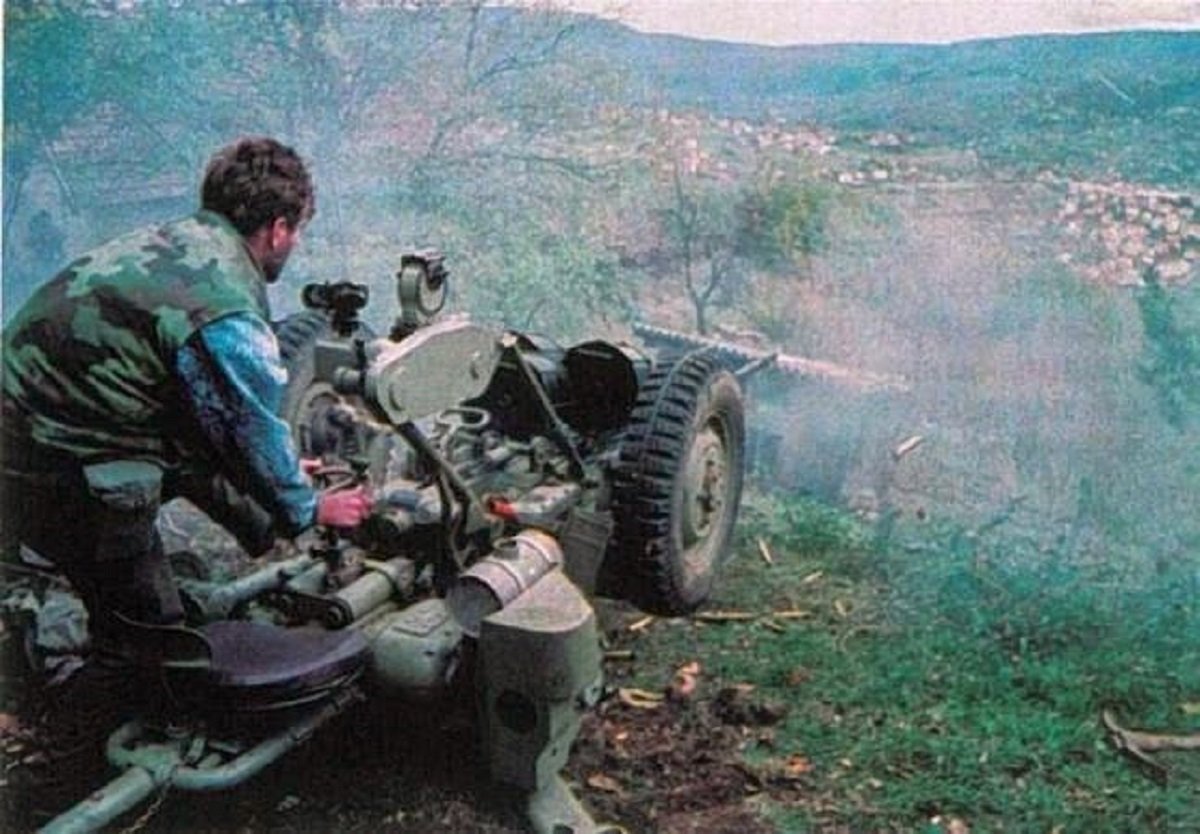After entering the former National and University Library in Zagreb, today’s Croatian State Archives, there are paintings of four cities located in the atrium. Above the entrance to the small reading room is a painting of Senj by Menci Klement Crnčić. Oton Iveković’s Dubrovnik is above the entrance to the large reading room. Above the entrance to the book lending hall is Ferdo Kovačić’s Đakovo while a painting of the city of Jajce by Gabrijel Jurkić is found above the entrance to the catalog hall.

That royal city, the seat of the last Bosnian King Stjepan Tomašević has seen not only many rulers and regimes throughout history but destruction as well, most recently in the spring of 1992 when it became the target of Serbian aggression in Bosnia and Herzegovina (BiH). The first artillery attack took place on Fair Day, 27 May 1992 and resulted in the deaths of several people. In the days that followed, Jajce was increasingly targeted by missiles from enemy positions. In addition to daily shelling, Jajce’s defenders had to deal with strong attacks by infantry and armoured units of the Serbian army and the Yugoslav People’s Army (YPA). Serb forces pressed from all sides, especially from Mrkonjić Grad and Banja Luka and air strikes began in August as well. It was part of operation “VRBAS 92”.

Despite the fact that the enemy had superior equipment, manpower and logistics from the outset, defenders held out until autumn when they found themselves surrounded. As a result, it was increasingly difficult to break through Rama and Fojnica to Jajce with logistical support, weapons, medicine and food. The isolated city of Jajce had a war hospital that daily treated many wounded, both soldiers and civilians who were increasingly leaving their homes to travel through difficult hilly terrain along the “Road to Salvation” to reach the town of Travnik.

Following final street battles, the defenders and the civilian population had to withdraw on night of the 29-30 October 1992. Approximately thirty thousand people were expelled from their homes escaping with their bare lives and a large wave of refugees set out for the Republic of Croatia and unoccupied areas of Bosnia and Herzegovina. During the period it was under occupation, Jajce was systematically looted, cultural and religious monuments desecrated and all churches were destroyed, including the ancient Catholic shrine of St. Ivo in Podmilačje. Many civilians who remained in Jajce were imprisoned or killed. The fall of Jajce is considered one of the causes of the Bosniak-Croat conflict in BiH because BiH Army units did not allow Croatian Defense Council forces to get to Jajce during crucial moments in its defense.

After three and a half years of fighting, the town of Jajce was liberated in September 1995 by the combined forces of the Croatian Army, the Croatian Defense Council and the Army of Bosnia and Herzegovina in an operation codenamed “MAESTRAL”. Under the Dayton Agreement, Jajce and its surrounding area became part of the Federation of Bosnia and Herzegovina.
Sources
Internet
“Jajce”. Hrvatska enciklopedija, mrežno izdanje. Leksikografski zavod Miroslav Krleža, access achieved October 30, 2020, http://www.enciklopedija.hr/Natuknica.aspx?ID=28530
TV
Jajce u obrani 1992. Braniteljska udruga 13. rujan. screenwriter and director: Pavle Vranjican, 2014
Graduated with a Master’s Degree in History from the University of Zagreb. He has worked at the Croatian History Museum and as a researcher for the popular TV Calendar program for Croatian Radio and Television. He has authored several books and documentaries about Croatia’s Homeland War and is the creator/producer of the immensely popular “It Happened on this Day – Homeland War” Facebook page as well as the online portal Domovinskirat.hr. Borna also is the host and editor of the daily segment “Patriotic Minutes” on Croatian Catholic Radio. He created CroHis to promote the values of the Homeland War and ensure that the sacrifices of those who defended Croatia’s independence would not be forgotten.

